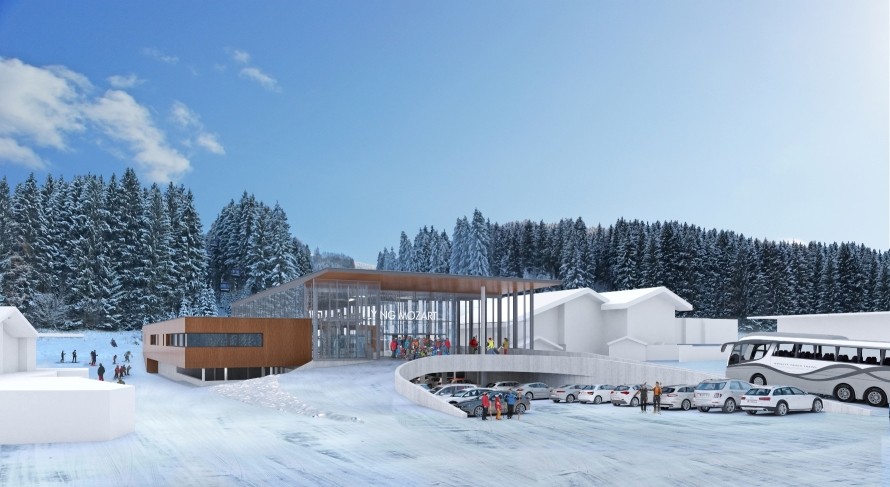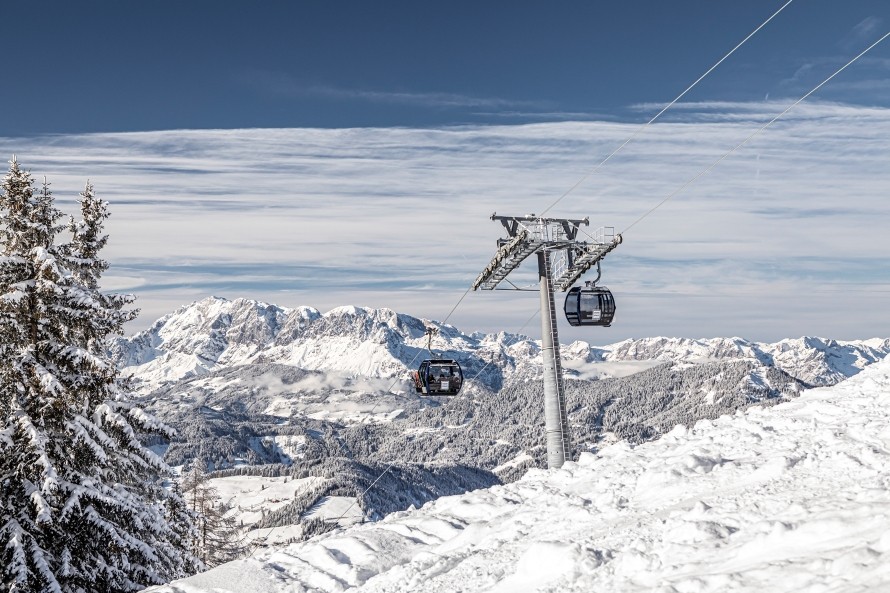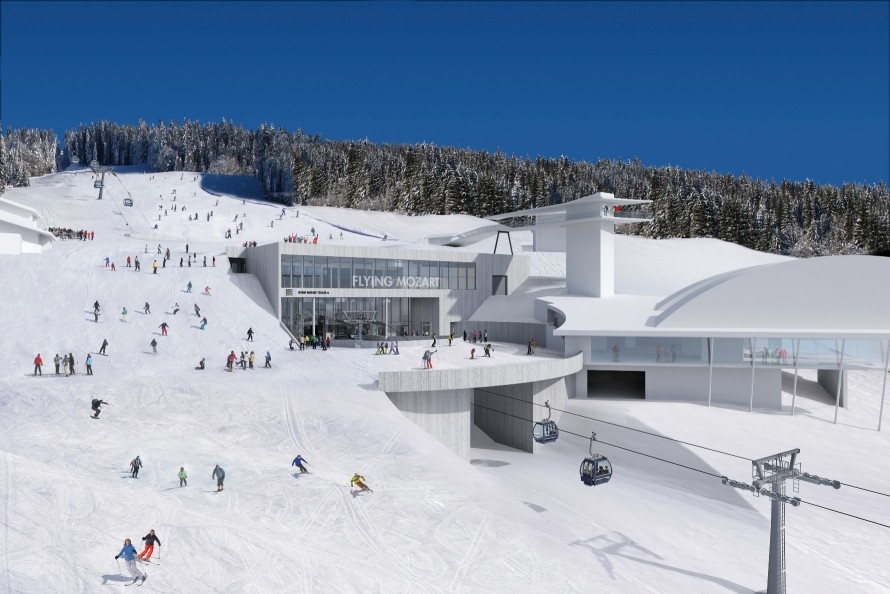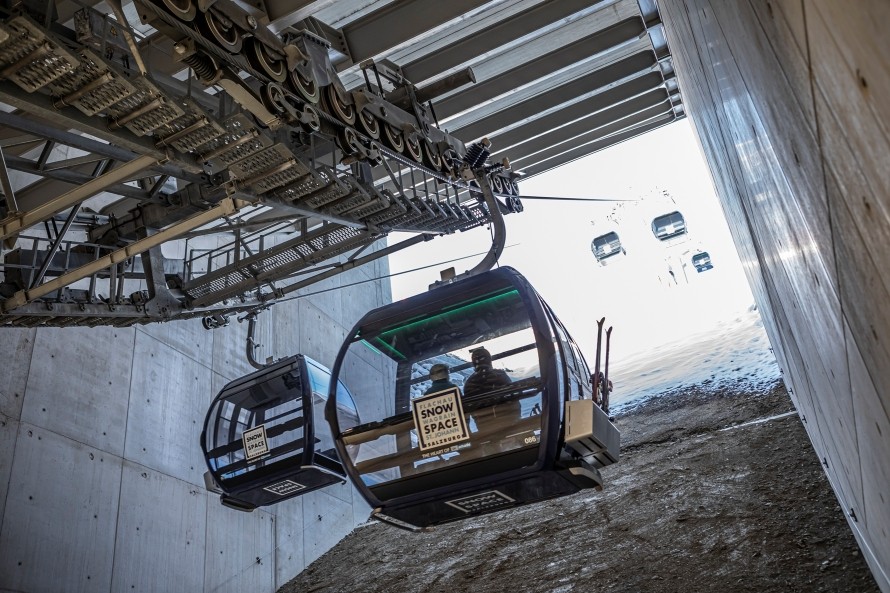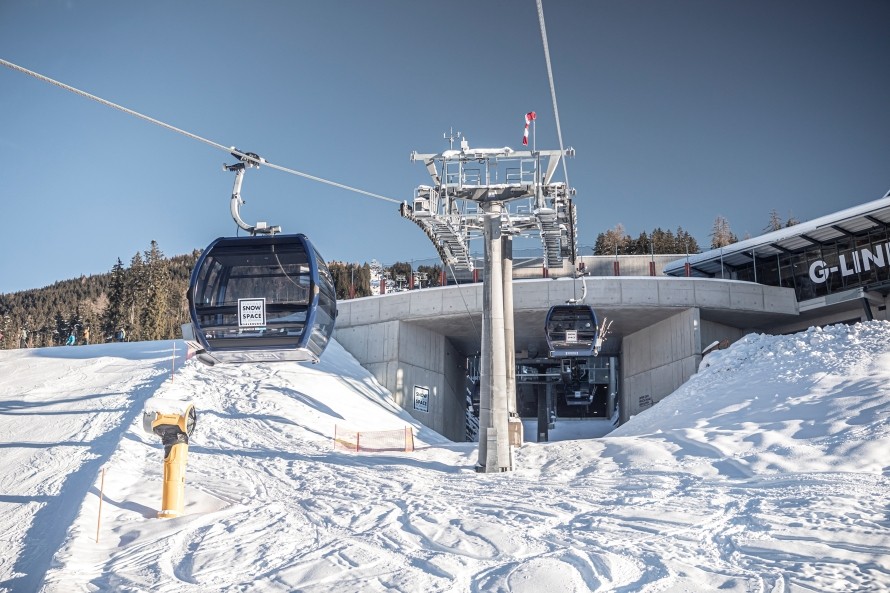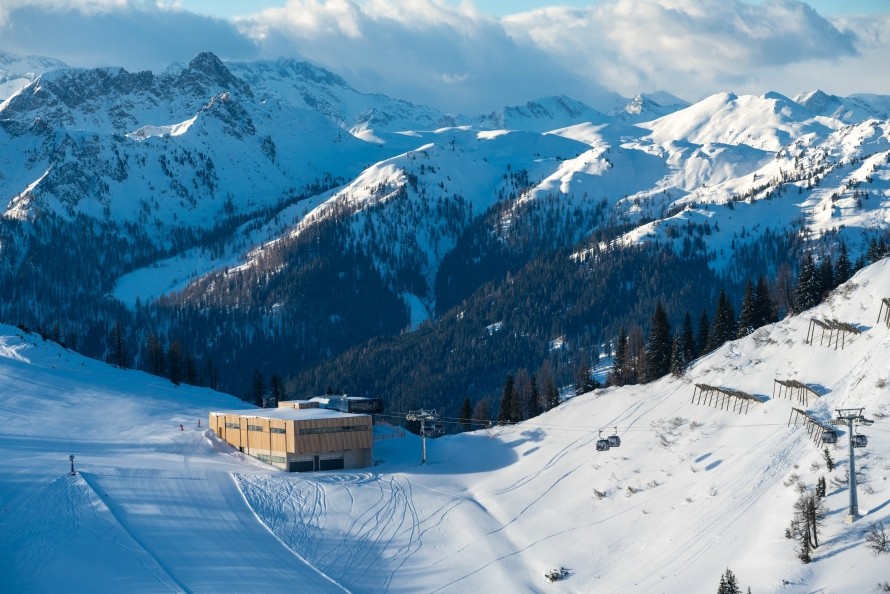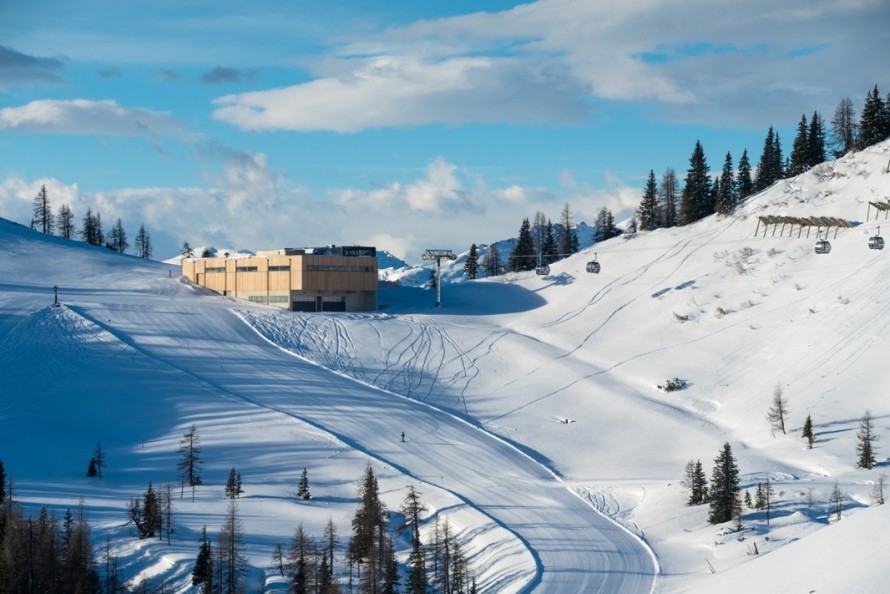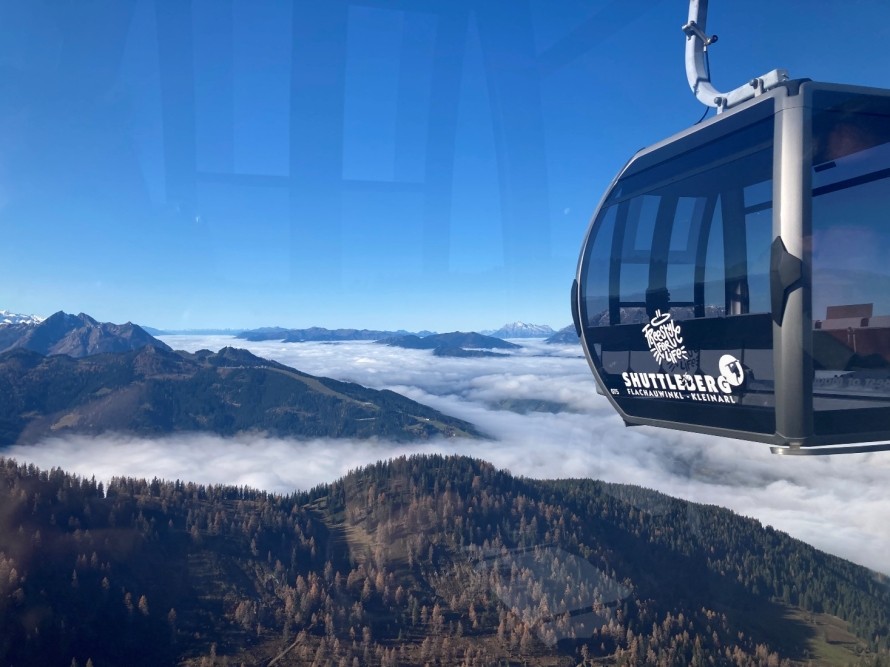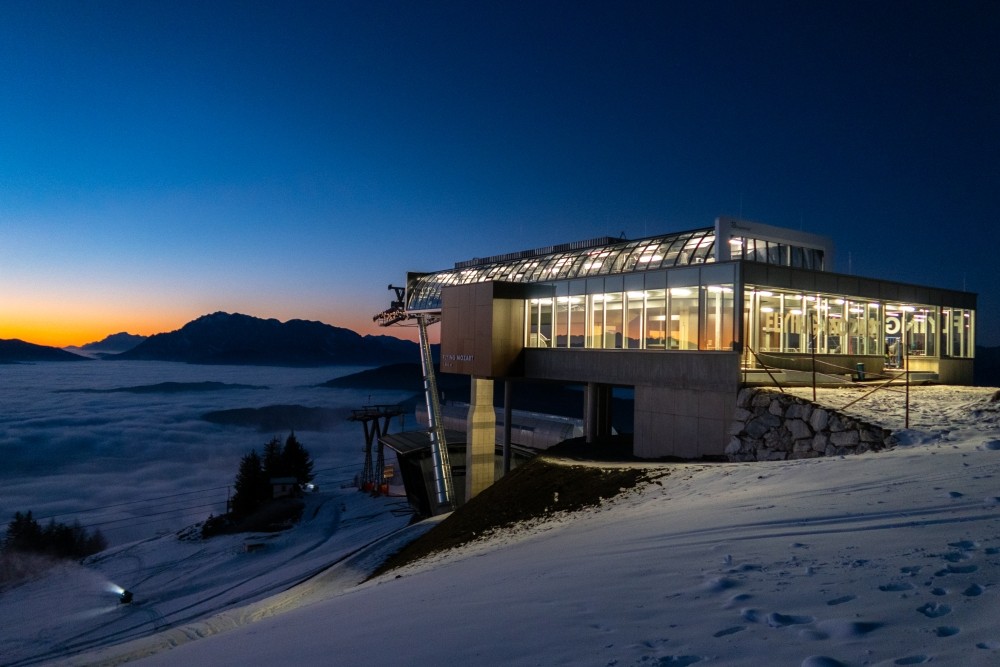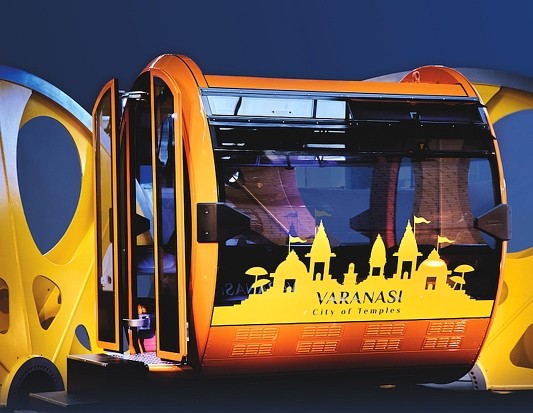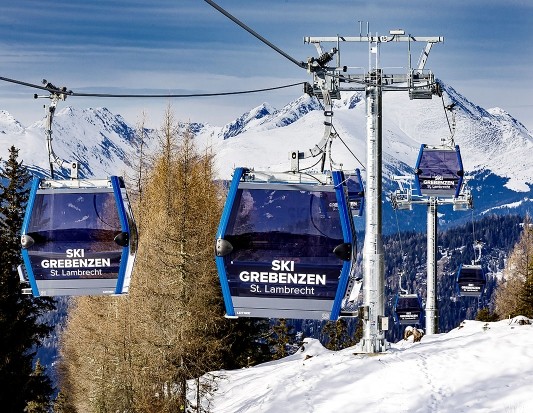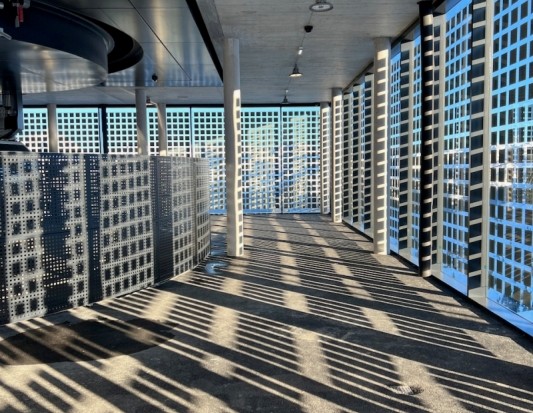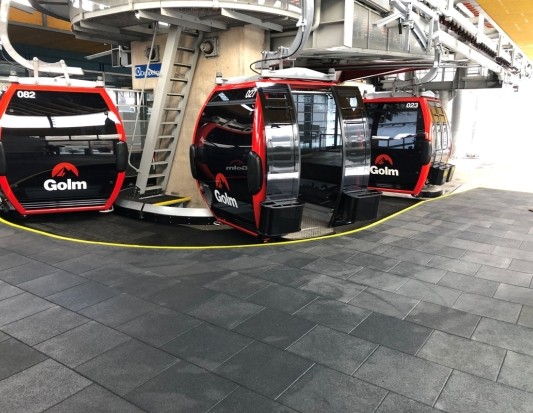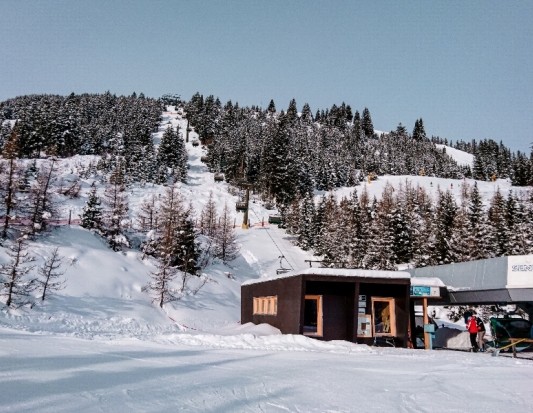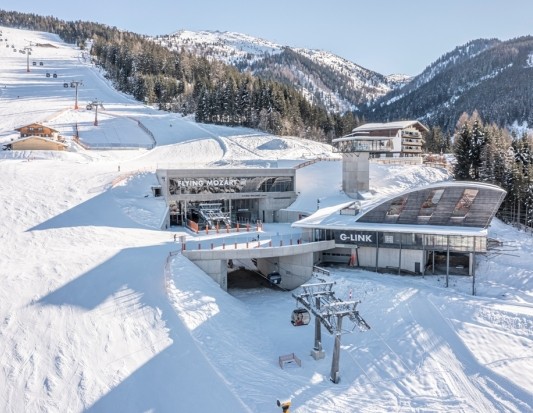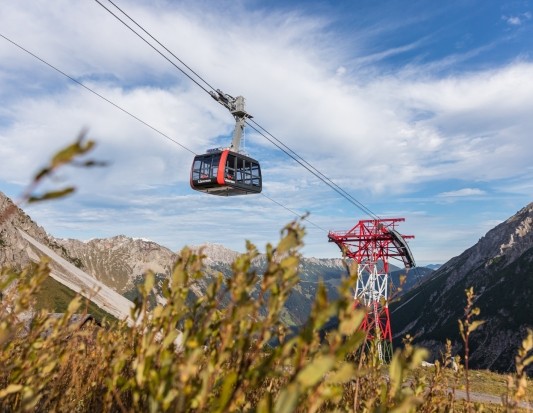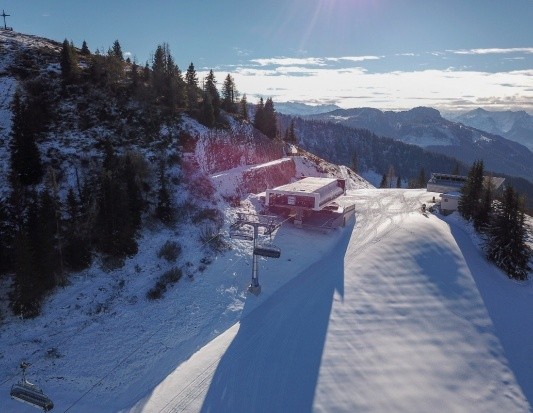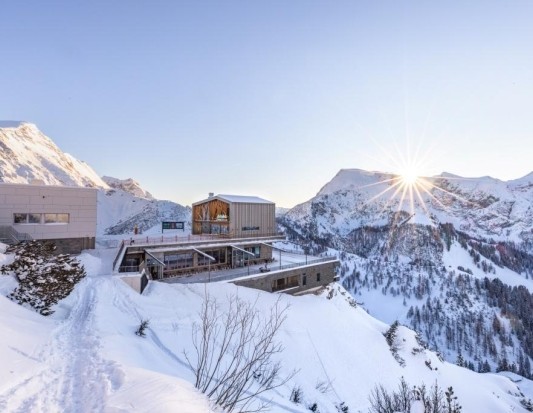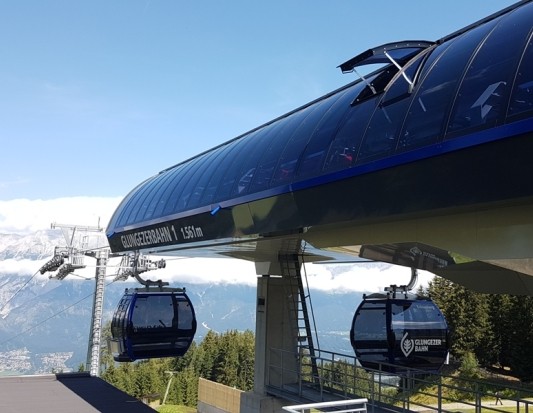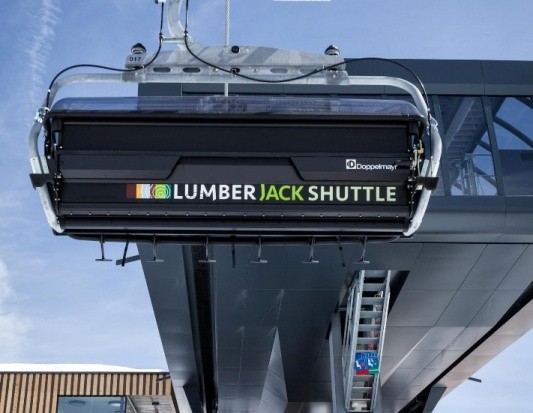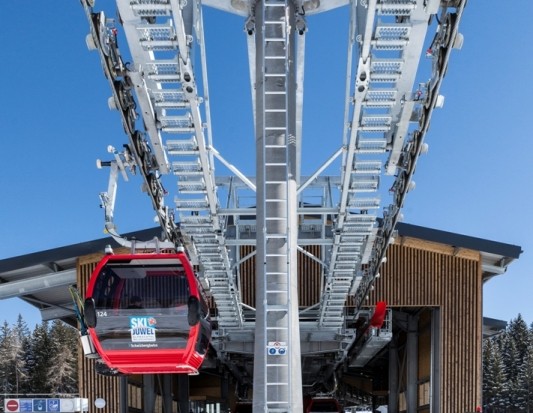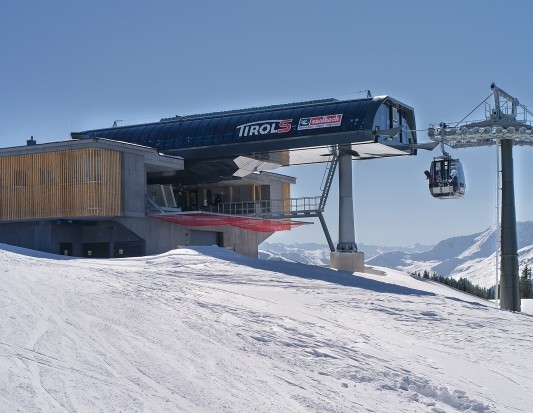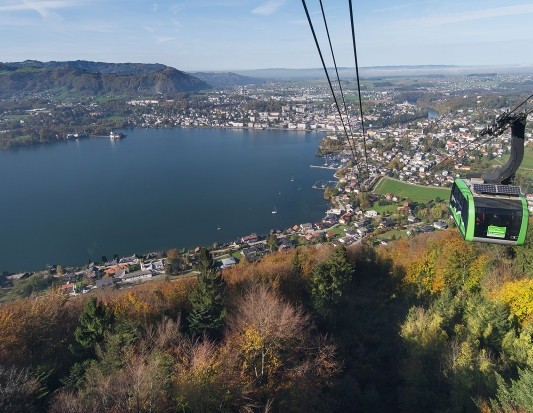10MGD Panorama Link + 10MGD Flying Mozart
Flachauwinkel I Kleinarl
Dream views and maximum comfort
The Panorama Link connects the prestigious ski resorts of Snow Space Salzburg and Shuttleberg Flachauwinkl-Kleinarl. Since October 2020, passengers on the ropeway have been treated to breathtaking views of the majestic Hohe and Niedere Tauern mountains. Constructing these ropeways in the challenging high alpine terrain was no small feat. Another noteworthy accomplishment was the relocation of the mid-station with underground rope guidance during the renewal of the Flying Mozart 10-person ropeway on the Grießenkar, a project completed in October 2021.
Situated in Salzburg's Pongau region, this mountainous area boasts 12 peaks, 5 valleys, and an extensive network of 210 kilometers of ski runs, spanning from St. Johann through Wagrain and Flachau to Zauchensee. As a result, the region has become one of Austria's premier tourist destinations, known as the Ski Amadée. In 2017, Snow Space Salzburg was formed through the merger of the ski areas in Wagrain, St. Johann, and Flachau. This union, combined with the introduction of the G-Link aerial tramway by Salzmann Ingenieure in 2013, aimed to integrate the previously road-accessible Shuttleberg Flachauwinkl-Kleinarl ski area into the interconnected piste landscape. This visionary connection has successfully alleviated traffic congestion in the valleys and enhanced the skiing experience by providing convenient access to multiple entry points.
Simultaneously, alongside the planning of the Panorama Link ropeway, the venerable Flying Mozart ropeway in Wagrain underwent a complete overhaul. The original ropeway which had been highly popular since its inception in 1988, required meticulous consideration of altered transfer, entry, and exit arrangements during the construction of the new ropeway. While the intricate routing of the Panorama Link through the challenging high alpine terrain presented a lengthy and complex process, the construction of the new Flying Mozart ropeway demanded significant engineering efforts to ensure optimal integration with the G-Link mountain station. Initial plans for this comprehensive project were formulated in 2016, and the construction of both ropeways was ultimately completed in October 2020 (Panorama Link) and 2021 (Flying Mozart).
Wolfgang Hettegger, the CEO of Snow Space Salzburg Bergbahnen, expressed his enthusiasm, stating, "The realization of our long-cherished vision for this diverse and modern ski region has been achieved through the connection of these ski areas. The modernization of the Flying Mozart represents a significant milestone." After a quiet winter season in 2020/2021 due to the pandemic, the new ropeways had a successful debut in their first joint season. Josef Harml, the delighted Managing Director of Shuttleberg, emphasized the benefits of the integrated ski area, stating, "Together, we are even stronger. Our guests are thrilled with the borderless ski area, and we have also reaped the rewards of a significant reduction in traffic."
The completion of these remarkable projects has not only brought forth a diverse and contemporary ski region but has also enhanced the skiing experience for visitors. With awe-inspiring panoramic views and improved accessibility, skiers and snowboarders can now revel in the wonders of a borderless ski area, seamlessly connected by these exceptional ropeway systems.
Spectacular views
In the context of ski areas, maximizing efficiency is of paramount importance, encompassing factors such as reduced waiting times, shorter distances, seamless transfer experiences, and the potential for introducing new slopes. However, it is essential to acknowledge that the shortest route may not necessarily be the most suitable option, as exemplified by the planning process of the Panorama Link.
According to planner Stephan Salzmann, the initially proposed shortest link, spanning a mere one kilometer, faced several valid objections. Primarily, concerns were raised about the limited capacity of the connecting railroads and the challenging nature of bridging a valley in terms of nature conservation and land ownership.
After five years of meticulous planning and the exploration of eleven different axle variants, the optimal connection was ultimately realized between August 2019 and October 2020. The chosen solution materialized as a detachable single-cable ropeway, following an ideal route that traverses the high alpine region from north to south, directly over the mountain ridge. Passengers aboard the 10-seater cabins are treated to awe-inspiring panoramic views of the Hohe and Niedere Tauern mountain ranges. Notably, the elevation difference between the upper and lower stations amounts to a mere 72 meters.
By prioritizing careful planning and considering various factors, the Panorama Link project has achieved an effective and harmonious integration of the ski areas, ensuring an enhanced skiing experience for visitors. This endeavour exemplifies the dedication to excellence and the commitment to preserving the natural landscape while simultaneously providing unparalleled vistas for skiers and snowboarders.
Complex assembly and innovative recovery
The planning and construction of the approximately three-kilometer-long route for the Panorama Link posed multifaceted challenges at various levels. The demanding task of building in inaccessible terrain necessitated the use of helicopters, while careful flight planning had to consider the mating seasons of black grouse and capercaillie. Additionally, the presence of avalanche-prone areas made conventional rescue methods, such as abseiling down the cabins, impractical. To address this, an integrated evacuation concept was devised, which required significant design efforts to ensure passenger safety.
Numerous supplementary measures were implemented to guarantee the functionality and mobility of the ropeway and its vehicles. These included the installation of an emergency drive in the bottom station, emergency running bearings in the rope slides, and lifting devices at the support structures. These measures not only ensure the continuous operation of the ropeway but also enable safe evacuation procedures in the event of defects or malfunctions.
Stephan Salzmann, from Salzmann Ingenieure, played a vital role in the planning and project engineering of the ropeway technology. Furthermore, they were responsible for the architectural design of the mountain station, encompassing essential facilities such as the garage, transformer room, and low-voltage room. Their expertise and meticulous efforts were crucial in successfully addressing the unique challenges associated with the Panorama Link project, ensuring the realization of this remarkable mountain transportation system.
Fast and comfortable
At the top station on the Shuttleberg side, the Panorama Link seamlessly connects with the cutting-edge Lumberjack ropeway (refer to Newsletter No. 21) and transports guests to the new Flying Mozart in Wagrain. At the mid station of the Flying Mozart, the G-Link continues its journey towards Grafenberg. Previously, the entry level of the G-Link on the old Flying Mozart was approximately 20 meters below the mid station, necessitating the use of a ropeway system to bridge the height difference. Moreover, the top station was positioned around 50 meters away from the optimal location between the Flachau and Wagrain slopes. However, with the integration of the once separate ski areas, the parameters have changed. Consequently, during the reconstruction of the ropeway, the focus was not only on significantly increasing capacity and comfort but also on simplifying the transitions between routes and stations.
After serving for more than 58,000 operating hours and welcoming approximately 33.7 million guests, the 33-year-old ropeway was replaced in October 2021 by a state-of-the-art 10-seater gondola. This modern marvel boasts a remarkable total of 142 luxuriously equipped cabins, complete with heated seats, lighting, and WLAN connectivity. With an impressive capacity to transport over 4,000 guests per hour, this new Flying Mozart ropeway efficiently ascends 966 meters in altitude from Wagrain to the Grießenkar. Stephan Salzmann proudly affirms, "With this remarkable transport capacity, the new Flying Mozart stands as one of the most powerful single-cable ropeways in the world."
Underground ropeway
Distinguished by its power, comfort, and seamless integration with the surrounding landscape, the remarkable Flying Mozart ropeway opened its doors in October 2021, an impressive accomplishment achieved within a mere nine-month construction period. The journey towards its successful operation was not without its obstacles. Simultaneously with the construction of the new ropeway and the three stations, the existing ropeway had to be dismantled meticulously. "To ensure a seamless start to winter operations, flawless coordination was essential, spanning from the initial planning stages to the final implementation," Salzmann reveals.
In order to enhance passenger comfort by facilitating a level transfer to the G-Link, the decision was made to position the new intermediate station, along with its accompanying garage, at a lower elevation and harmoniously integrated into the natural landscape. According to cableway planner Salzmann, the intermediate station presented a particularly demanding task: "The chosen underfloor solution not only entailed significant technical complexity but also incurred substantial costs. Nevertheless, it has vastly improved the convenience of connecting to the G-Link." Salzmann Ingenieure assumed full responsibility for the comprehensive ropeway technology, encompassing all aspects from initial planning to final approval.
Long-term partnership, long-term vision
Salzmann Ingenieure has played a pivotal role as the ropeway planner in numerous projects that have accompanied the remarkable development of the winter sports areas in and around Wagrain for several decades. The partnership began in 1988 with the realization of the iconic Flying Mozart, a project undertaken in collaboration with architect Helmut Dietrich. Subsequently, in 1999, the construction of the Rote 8er further contributed to the area's growth. Between 2007 and 2013, after an in-depth analysis of the prevailing conditions, significant expansion took place with the construction of the Grafenberg Express I and the G-Link aerial tramway, which spanned the valley. In 2018, the addition of the 8-seater chairlift Sonntagskogel II further enhanced the facilities in the region (as covered in Newsletter No. 22).
In the neighboring Shuttleberg ski area, Salzmann played a crucial role in the construction of the Lumberjack Shuttle in 2018. This modern 6-seater chairlift marked the initial phase of the ambitious overall project aimed at integrating Snow Space Salzburg, established in 2017, with Shuttleberg Flachauwinkl-Kleinarl.
"Wisdom comes from experience, and Salzmann has been intimately acquainted with the region, its people, and its mountains for many years. At Snow Space Salzburg, we have enjoyed a long-standing partnership with Salzmann, relying on their commitment to quality and trustworthiness. Therefore, we have found in Salzmann the ideal partner to bring our vision to life," affirms CEO Wolfgang Hettegger, emphasizing the company's confidence in Salzmann's expertise and dedication.
